Next Tri-City Amateur Radio Club meeting
7:00pm Monday, Nov 3, 2025
Confluent Makerspace
285 Williams Blvd
Richland, WA
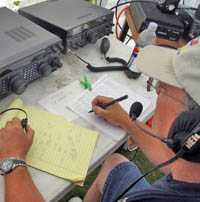
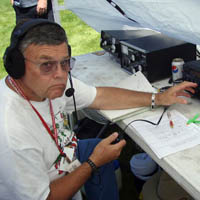
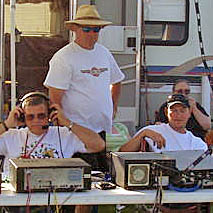
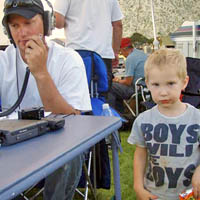
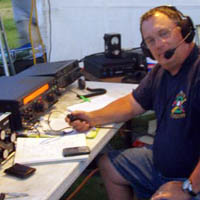

Prior to tower project, 44 ft fiberglass poles hold up a G5RV non-resonant dipole at the WB7CNV/WA7DUH residence.
Rebar grid construction for tower base.
Diagonal rebar wires are used to keep the grid square.
Linda WB7CNV cut about 450 tie wires for the tower base and 3 guy station rebar cages.
Tower base hole as specificed will be 4ft x 4ft x 5ft deep. 1st 6 inches is gravel and sand for moisture drainage, followed by 4 cement blocks that hold the bottom rebar grid up into the poured concrete. Tower base legs stick down into the gravel/sand (below the concrete so as to drain any water that may form in the tower legs. Another rebar grid will be embedded in the poured concrete 42 inches above the bottom grid seen in the picture.
The engineered specs call for #7 rebar (7/8"). Are we holding up a 2000 ft TV station antenna?
Benton County exemption from Benton County Code (BCC) 11.65 Communications Facilities that is really aimed at commercial installations such as TV/Radio stations or cell towers. However, this exemption did not remove the requirement for a building permit, structural analysis and original drawings with original (not copy) signature/stamp of Wash. State licensed Professional Engineer. Tower manufacturer's analysis and drawings were not acceptable (not original or Wash. licensed).
Also, county building dept. wanted to impose most of the requirements of BCC 11.65 anyway "for your and neighbor's protection". We battled several issues.
One of three rebar cages for guy stations. Each guy station consists of a reinforced block of concrete 6ft x 4ft x 2ft high buried 4 ft below grade. That long 3/4 in rod is what the guy lines are tied to, and is buried in the concrete block. Each rod will sustain at least 8000 lbs of pull, which is about 4X overkill, since the worst case forces with an 88 mph wind is calculated to be 1000 lbs. Building code in Benton Co. requires survival of 88 mph winds.
The guy rods have 6 x 6 x 1/2 in steel plates to keep them from pulling out of the concrete guy station blocks. Picture shows drilling the 3/4 in holes for the rods. I need a slower turning drill press.
Holes for guy station anchors are 6ft long,4 ft wide and 4 ft deep. Concrete blocks are used to hold the rebar cage up off the bottom 6 inches so they are embedded in concrete when poured. Painted lines indicate the level of concrete when poured.
Lower painted line marks the height of the concrete.
Yikes-- hit the sprinkler pipes. Anyone know a good way to find these sub-surface?
The break wasn't so bad. The mess was created when the sprinkler controller decided to turn the water on, washed out the far bank and filled the hole. Duhhhh.
Trying to fix a cave in. Sandy soil.
Basic process when digging all the holes-- dirt goes in the cart, Linda (WB7CNV) hauls away.
This cart has a dump function, which really helps unloading!
It's 104 today, so sweat band and wet neck towell in use!
Guy station base ready to be lowered into a guy station hole. Guy station blocks are buried about 4 feet down, so only half the dirt is hauled away. The pile in the background is what goes back in to cover it up.
Originally tried to lift rebar cage from a single point, but it caused the rebar cage to deform. A lifting frame was then built which pulled up vertical instead of an angle.